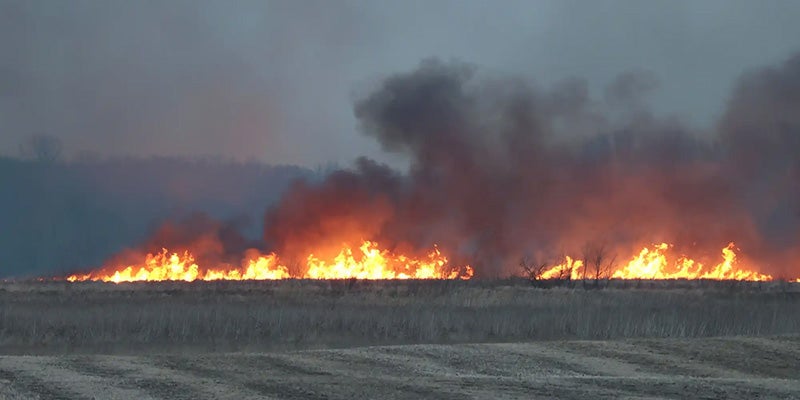In the wake of wildfires Sunday Austin Fire Chief urges preparedness, vigilance
Published 8:49 am Tuesday, March 5, 2024

- Flames are visible and plumes of dark smoke rise into the sky as a wildfire burns a few miles east of Waseca on Sunday Andrew Krueger/ MPR News
|
Getting your Trinity Audio player ready...
|
We may be enjoying the unseasonably warm weather we’ve received lately, opposed to the snow we usually experience this time of year, Sunday’s massive wildfire near Waseca is a reminder of just how dry the state remains.
Just one of several fires reported across the state and driven by fierce winds, the Waseca blaze scorched over 3,000 acres and required several departments with support from the Minnesota Department of Natural Resources to finally put it down.
Minnesota Public Radio reported that 12 departments in total responded along with a helicopter and two planes that laid down fire retardant.
Another large fire near Fergus Falls burned over 2,300 acres Sunday.
“It shows how quickly things can get out of control,” Austin Fire Chief Jim McCoy said Monday evening.
The National Weather Service put a red flag warning in effect as winds gusted throughout the day, driving the blazes across the state to a point where the smoke and fires were visible through satellite imagery.
Waseca’s fire started as a small brush fire before expanding under the weather conditions.
It was a stark reminder of how quickly blazes can build, as well as the overall conditions throughout the state.
According to the US Drought Monitor, a majority of the state of Minnesota is listed as abnormally dry or higher. Of those conditions, more than half of the state is considered under a drought of some level.
Aside from a small strip at the top of the county, all of Mower is considered under severe drought conditions with another small slice at the bottom of the county considered to be in extreme drought.
“We’re a little bit ahead of schedule this year and we need to be aware that we haven’t gotten a lot of moisture,” McCoy said. “Everything is still dry on top. When the winds gust as much as it did and blowing as strong as it was (Sunday), bad things happen quickly and get out of control. Something that doesn’t seem like a whole lot turns into a lot in a short amount of time.”
With no indication of meaningful precipitation on the horizon, McCoy urges people to be aware of their surroundings and understand current conditions when using a fire in some capacity.
McCoy said to never leave a fire unattended and to make sure there is something nearby to put the fire out and that it is out completely.
“If you’re not around there it needs to be put out,” McCoy said, adding that not even smoke should be emanating from the extinguished fire. “We need something to put the fire out if it gets outside of your container.”
Items like a bucket of water, water hose or sand should be within easy reach and for fires that are bigger than three feet in diameter, McCoy reminds people that a permit is needed.
Also, people should be looking to DNR, which relies on wind conditions and relative humidity measurements when determining burn bans.
And finely, McCoy urges people to be vigilant.
“It goes back to see something, say something,” he said. “If something is on fire, call. We would always rather go and find out that it’s controlled or it has a permit rather than it has gotten out of hand because nobody wants to make the call.”




